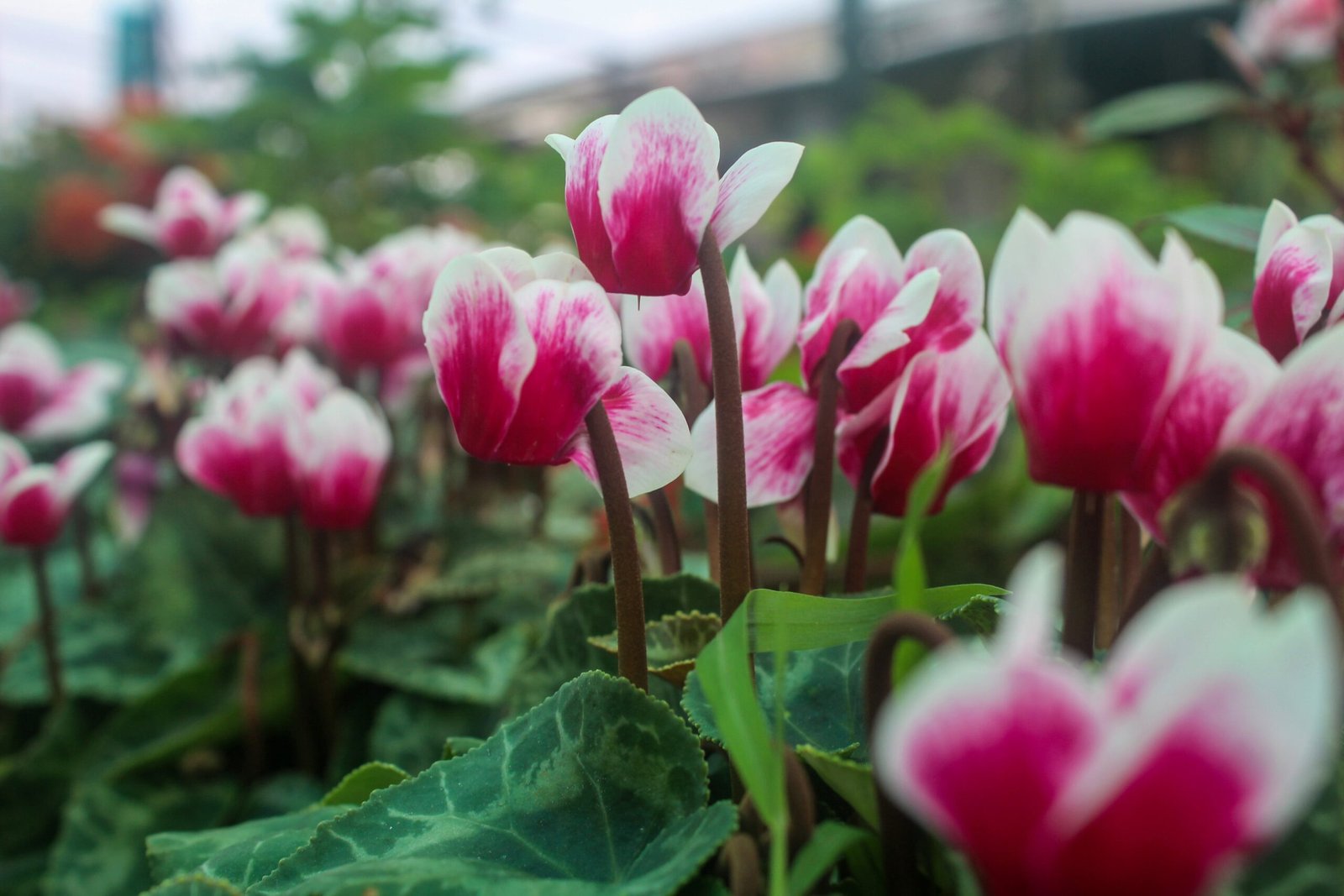- Lotus: How to Plant, Grow and Care for Lotus - 3 November 2023
- Zinnia: How to Plant, Grow and Care for Zinnia - 3 November 2023
- Coreopsis: How to Plant, Grow and Care for Coreopsis - 3 November 2023
Cyclamen, a colorful flowering plant, is known for its heart-shaped leaves and delicate, upward-facing flowers.
About Cyclamen:
Cyclamen is a beautiful plant that comes in different types, including the Hardy Cyclamen and the Persian Cyclamen. Each type has its own unique characteristics and growth habits.
Cyclamen has a perennial life cycle, blooming season extending from late summer to early spring. It offers a long-lasting display of vibrant colors, attracting bees, butterflies, and hummingbirds.
Characteristics:
Cyclamen is relatively easy to grow and maintain, making it a popular choice for gardeners. While not edible, it has a delicate fragrance. The plant also has an extended bloom time, adding beauty to any landscape. It is often used as an ornamental plant due to its attractive flowers and foliage.
Growing Conditions:
Cyclamen prefers well-draining soil and thrives in partial shade to full shade exposure. It prefers cool temperatures and requires regular watering. The plant is relatively resistant to deer, rabbit, and diseases like rust, fusarium wilt, downy mildew, and powdery mildew.
| Season | Depth | Height | Spacing | US Hardiness Zone |
|---|---|---|---|---|
| Fall | 1/2 inch | 6 to 9 inches | 6 to 10 inches | 5 to 9 |
Plant Care Instructions
Light Requirement
Cyclamen plants prefer partial shade or full shade. They can tolerate some morning sun, but direct afternoon sun should be avoided.
Water Need
Keep the soil of cyclamen plants evenly moist but not waterlogged. It’s best to water them from the bottom by placing the pot in a tray of water and allowing the plant to soak up the moisture. Avoid getting the leaves wet, as this can lead to fungal diseases.
Fertilizer
For fertilizing cyclamen plants, use a balanced fertilizer with a ratio of 10-10-10 or 20-20-20. To go the organic route, you can use compost or organic granular fertilizers. These will provide the necessary nutrients without harming the environment.
Pruning
Regular pruning is not necessary for cyclamen plants. However, you can remove spent flowers and yellowing leaves to keep the plant tidy and encourage new growth. Be gentle when handling the delicate flowers and foliage.
Toxicity
Cyclamen plants are toxic to humans and pets if ingested. Keep them out of reach of children and pets to avoid any potential poisoning incidents.
Common Issues
Common issues with cyclamen plants include crown and root rot, powdery mildew, and aphid infestations. Overwatering and poor air circulation can contribute to these problems. Regularly inspect the plants for signs of disease or pests and take appropriate action.
Culinary Benefits:
- Cyclamen flowers can be used as a garnish in salads and desserts, adding a pop of color and a delicate flavor.
- Some people enjoy using Cyclamen tubers in cooking, as they have a slightly nutty taste and can be boiled, roasted, or sautéed.
- Cyclamen leaves can be used in herbal teas, providing a unique and subtle flavor.
- The flowers can also be crystallized and used as decorations on cakes and pastries.
Medicinal Benefits:
- Cyclamen has been used in traditional medicine for its diuretic properties, helping to promote urination and cleanse the body.
- The plant has also been used to alleviate symptoms of asthma and bronchitis, due to its expectorant qualities.
- Cyclamen extracts are believed to have anti-inflammatory effects and can be applied topically to soothe skin irritations.
- Some studies suggest that Cyclamen may have antioxidant properties, protecting cells against damage caused by free radicals.
- Additionally, the plant has been used as a natural remedy for migraines, menstrual cramps, and digestive issues.
- As with any plant-based remedy, it’s important to consult with a healthcare professional before using Cyclamen for medicinal purposes.
Companion Plants for Cyclamen:
1. Begonias: These shade-loving perennials help keep the soil moist around your cyclamens, and their colorful foliage adds a nice touch to any garden.
2. Ferns: Cyclamens thrive in damp environments, so ferns make great companions as they love similar conditions and add texture to your garden.

